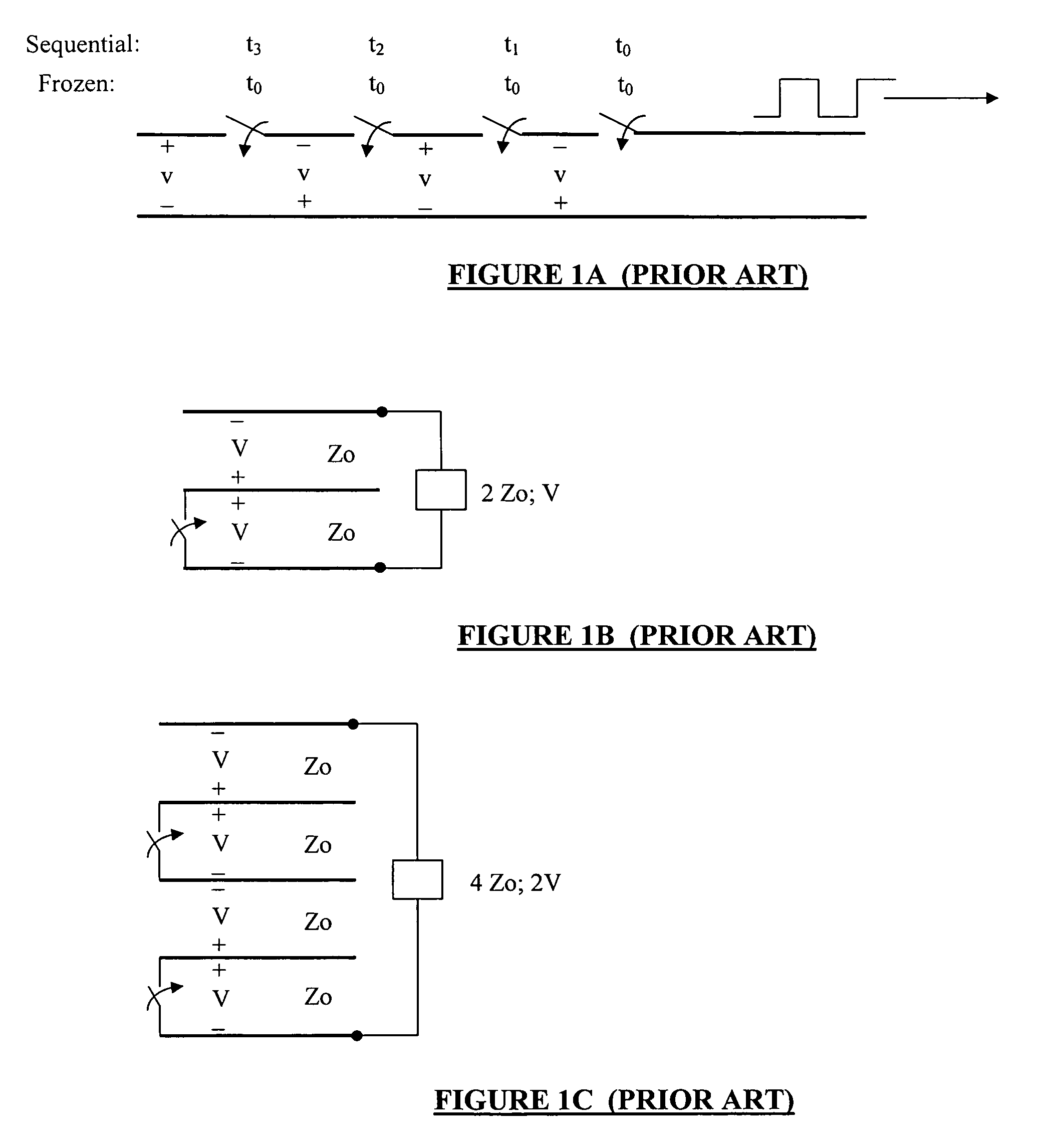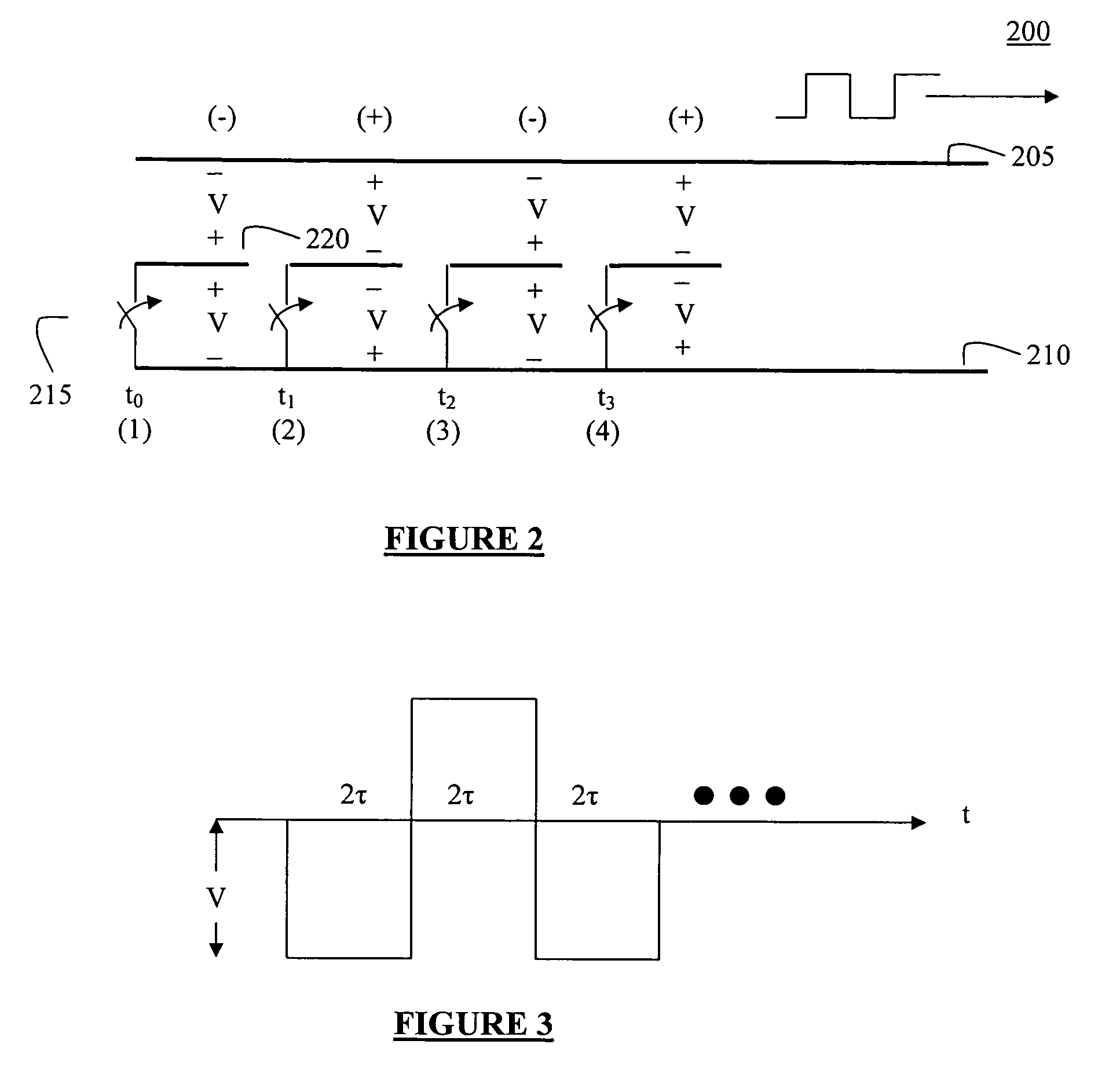Method and apparatus for digital synthesis of long multi-cycle microwave pulses
a multi-cycle, microwave technology, applied in pulse train generators, pulse techniques, line-transmission details, etc., can solve the problems of short microwave pulse radiation, limited power, and inability to produce clean microwave pulses, and achieve the effect of increasing the mismatch in the extraction of low-z energy, introducing more losses in low-z lines, and increasing the impedan
- Summary
- Abstract
- Description
- Claims
- Application Information
AI Technical Summary
Benefits of technology
Problems solved by technology
Method used
Image
Examples
Embodiment Construction
[0043]According to the present invention, conductor segments (transmission line conductors) are positioned within a transmission line structure in order to generate microwave pulses. The conductor segments are switchably coupled to one or the other conductive segment of the transmission lines, while the switches are connected between adjacent segments in the transmission line structure. Microwave pulses may be induced in the transmission line by closing the switches in a controlled manner to discharge successive segments, or successive groups of segments, into the transmission lines. The induced pulses travel uninterrupted along the transmission lines in a desired direction to the load. Efficiency of systems according to the present invention is increased and / or maximized by adjusting the impedance ratio associated with the transmission line conductor segments relative to the transmission lines according to an optimum ratio. In all cases, the lowest characteristic impedance Z1 is re...
PUM
 Login to View More
Login to View More Abstract
Description
Claims
Application Information
 Login to View More
Login to View More - R&D
- Intellectual Property
- Life Sciences
- Materials
- Tech Scout
- Unparalleled Data Quality
- Higher Quality Content
- 60% Fewer Hallucinations
Browse by: Latest US Patents, China's latest patents, Technical Efficacy Thesaurus, Application Domain, Technology Topic, Popular Technical Reports.
© 2025 PatSnap. All rights reserved.Legal|Privacy policy|Modern Slavery Act Transparency Statement|Sitemap|About US| Contact US: help@patsnap.com



